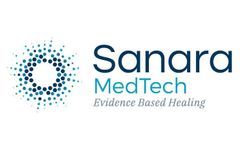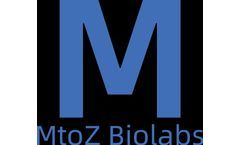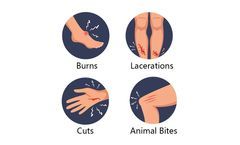Refine by
Wound Healing Articles & Analysis
103 articles found
In surgical tissue recovery, focus is on controlling infection, managing inflammation, and ensuring wound closure. Beneath the surface—anatomically and biologically— the extracellular matrix (ECM) is undergoing remodeling ensure long-term tissue integrity. The ECM is a dynamic, biologically active network that orchestrates the entire process of tissue repair, ...
Acting as chemoattractant molecules, chemokines are central to both innate and adaptive immunity, influencing not only immune surveillance but also wound healing and angiogenesis. Over the past few decades, advancements in immunology and molecular biology have intensified the focus on chemokines, particularly recombinant chemokines, for their potential ...
Platelets take part in hemostasis and wound healing and they also contribute to immune inflammatory responses as well as tumorigenesis and metastasis besides the development of cardiovascular diseases. ...
Its ability to bond with bone and promote tissue regeneration makes it an excellent material for dental applications. l Wound Healing: bioglass has been shown to promote wound healing by stimulating the growth of new tissue. It is used in dressings and other wound care products. l Drug Delivery: Researchers ...
ByMatexcel
Their ability to respond to physiological stimuli and injuries makes them essential for wound healing processes. When skin is damaged, fibroblasts migrate to the wound site, proliferating and producing the necessary structural components to rebuild tissue. ...
Their roles span across embryonic development, wound healing, angiogenesis, and tumor progression. Measuring growth factor levels in biological samples is crucial for understanding how cells communicate and adapt to physiological changes or pathological insults. ...
Their ability to create a more favorable microenvironment can help in wound healing and tissue repair processes. Isolation and Cultivation Isolating hMSCs generally involves the harvesting of tissue, followed by enzymatic digestion to release the cells. ...
Hip fractures are common, especially in older adults, and require timely medical and surgical intervention. These injuries can significantly impact a patient’s mobility, quality of life, and overall health. Hip fractures are a medical emergency, and delayed treatment can lead to severe consequences. Elderly patients are particularly vulnerable to complications from prolonged immobility, ...
This ability is particularly beneficial in transplant medicine, where Wharton’s jelly cells could help prevent rejection by the recipient’s immune system. Wound Healing: Studies suggest that the application of Wharton’s jelly in chronic wounds can promote healing and tissue regeneration. The growth factors and ...
It plays a crucial role in ocular research, particularly for studies related to corneal physiology, wound healing, and the pathogenesis of various ocular diseases. This article delves into the characteristics, applications, and significance of the HCEC-12 cell line in biological and medical research. ...
Elastase contributes to the restructuring of the ECM by removing old or damaged elastin, allowing for the deposition of new fibers. This process is crucial during wound healing and development. However, dysregulation of elastase activity can lead to tissue damage and has been implicated in numerous pathological conditions. ...
Type III collagen is particularly common in newly formed connective tissues and rapidly growing tissues, such as during the wound healing process.The production of recombinant Type III collagen is accomplished by inserting the gene encoding Type III collagen into the DNA of an appropriate host cell, such as bacteria, yeast, insect cells, or mammalian cells. ...
They are involved in endothelial cell function, angiogenesis, apoptosis, tissue repair, wound healing, embryonic implantation during gestation and trophoblast invasion. ...
Consequently, prolidase deficiency has been linked to various medical conditions, including skin disorders, chronic wounds, and certain genetic disorders. In the pharmaceutical and nutraceutical sectors, Native Porcine Prolidase is used as a dietary supplement to support skin health, wound healing, and collagen synthesis. ...
The enzyme's ability to degrade keratin-based structures has led to its exploration in wound healing and tissue engineering applications. Keratinase-based treatments have shown promise in accelerating the regeneration of damaged skin and nails, offering new avenues for improved patient outcomes and enhanced quality of life. ...
Antimicrobial peptides also demonstrate anti-inflammatory, anti-cancer, and wound healing properties, broadening their portfolio of potential applications. ...
Recombinant human collagen, a natural biosynthetic material with good biocompatibility, low immunogenicity, degradability and absorbability, has been widely used in hemostasis, wound healing, drug slow-release carrier and tissue process. And it can be processed by electrospinning technology. ...
For instance, Liu [3] prepared a new hydrogel by using recombinant human collagen type III powder as a raw material to repair and regenerate skin wound. The results showed that the hydrogels exhibited good water retention properties and a suitable degradation rate, which can promote the proliferation and migration of wound healing-related cells ...
This type of wound requires special care because diabetes can cause circulation problems and nerve damage, making it harder for the wound to heal. ...
And as the body get age, the skin wounds become more frequent. It's time to understand the advantage wound care for for optimal healing. ...












